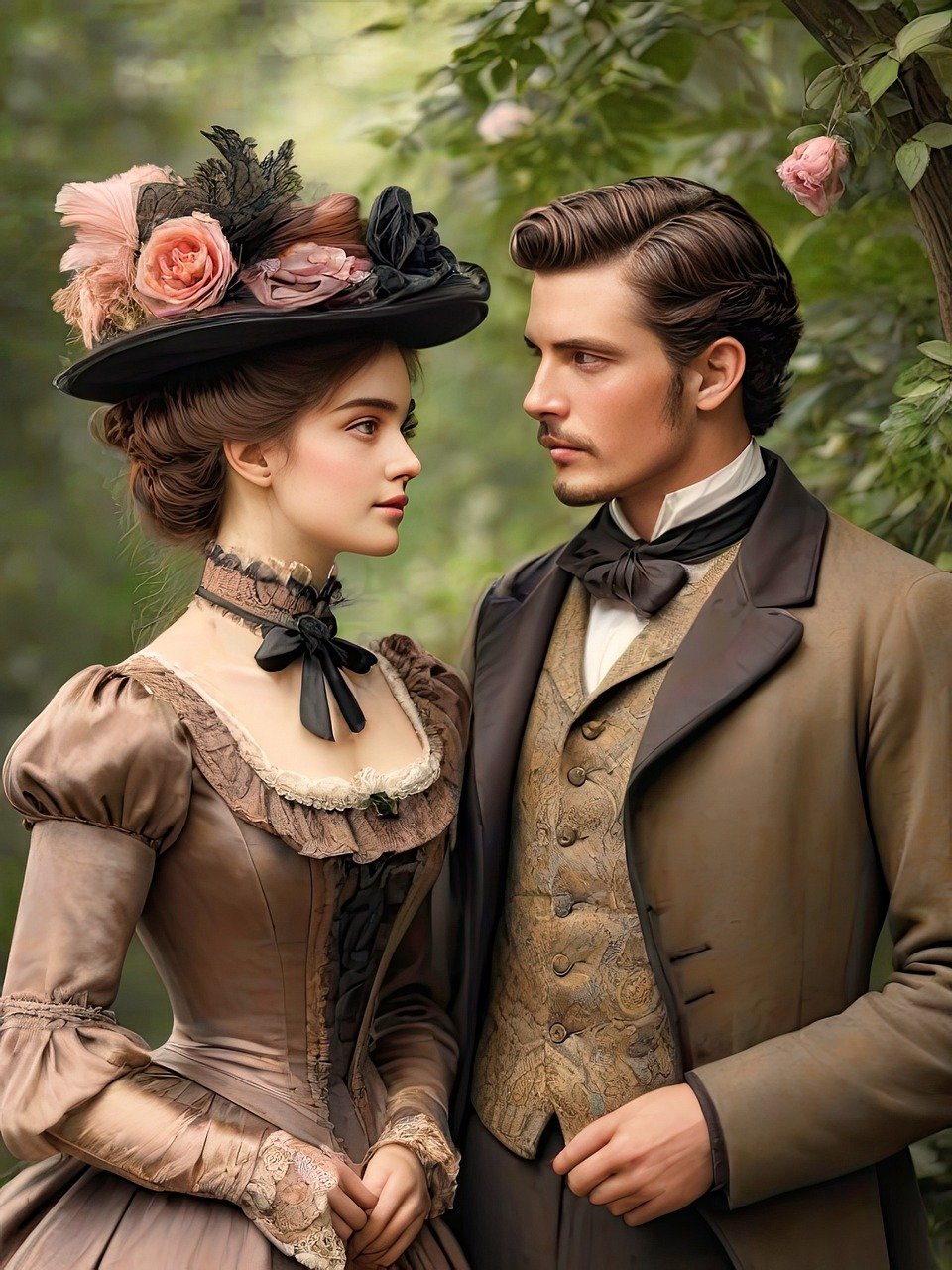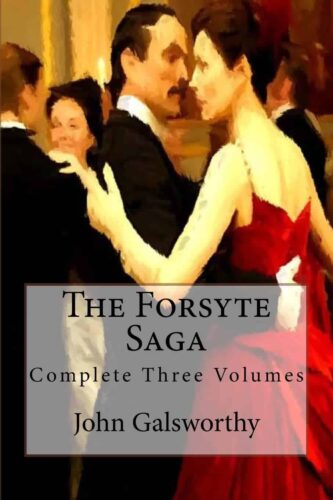Love Affairs, Betrayal, and Divorce
Author: John Galsworthy
The Forsyte Saga is an introspective journey through three generations of a newly wealthy family as they find their way in the Victorian world, seeking happiness in everything from properties to torrid love affairs. The Forsytes were farmers and are decided members of the new “rich.” As such, they are obsessed by the trappings of wealth and proving themselves worthy through ownership and propriety. As the generations follow, one after another, they learn from those before them while also repeating many of the same errors, seeking to own where they should instead accept the inescapable, aloof nature of beauty and love.
As a part of this old breed, we meet one of the main characters, the luckless Soames Forsyte, who has everything he could ever want except the love of his wife, the beautiful but cold Irene. Soames is not a bad man, but he is a man of the times. He is always seeking to prove himself, whether through his collected gallery of expensive paintings, the creation of a new mansion, or the parading of his lovely wife, a woman he was desperate to win but cannot possibly keep.
Thus enters the second main character, Irene. Irene is clearly the author’s favorite, and she will certainly engender strong emotion: either love or hate from the reader. She married Soames only due to his continual pressure and inability to accept rejection. She quickly realized, however, that she could never love him, and her ambivalence grew to loathing, despite Soames’ devotion.
The antagonism between the old world (Soames and his idea of owning his wife) and the new world (Irene and her willingness to thwart social norms for happiness) are the focus of all three novels. The first starts with Irene’s love affair with her best friend’s finance (who is also the quirky architect of their new home), the second novel focuses on the aftereffects and a brutal divorce, and the third novel looks at the pair’s luckless children, doomed to seemingly repeat the mistakes of their parents.
Although Soames and Irene are arguably the main characters, this is a Victorian novel, so there are hosts of additional characters. The Forsyte family is immense, and prone to reusing the same names across generations. Sometimes this is irritating, sometimes it is difficult to follow as side characters ramble through stiff conversations, and sometimes the interactions and relationships are essential to the ongoing familial divide over Soames and Irene’s increasingly contentious relationship. Sometimes it’s explosive, and sometimes it’s dull and slow. Again, welcome to the lengthy, delightful, and sometimes frustrating world of Victorian literature.
Between Soames and Irene and the host of supporting and dissenting family and friends, The Forsyte Saga presents us with complicated but consistently selfish characters. Regardless of where your affiliation lies in the marriage dissent, it is obvious that both characters are self-centered and selfish. Indeed, this is a family trait, as everyone seeks meaning for themselves, whether they find that meaning in property or in affairs of the heart or even in art. Soames was the most sympathetic, at least for me, in that despite his proprietorship, it was evident that his relationship with Irene was about more than possession. He never could hate her. Indeed, he had an immense capacity for love, as evidenced through his devotion to a woman who dislikes and betrays him and later, his arguably bad but well-intentioned adoration of his daughter, a woman who feels that she deserves to “have” regardless of the nature of the games that must be played to acquire another human being.

Image by creatematic from Pixabay
Evidently, however, the author’s compassion leans more towards Irene and later, her second husband, Jolyon (the younger.) These two are represented as principled (oddly), artistic, enamored of beauty (in the natural world and in humans), and ultimately uninhibited by the norms of society. Honestly, this personally made me dislike them, as there is a LOT of hurt left in their wake. Jolyon abandons his first child, June, for a new wife. Irene thwarts her best friend heartlessly (also June). I found the cloying description of these two in such praising terms to be irritating and one of the less enjoyable aspects of the narrative. Of course, my hatred towards Irene also showcases the author’s craftsmanship and ability to create imperfect characters who elicit strong emotions.
Nevertheless, as the novels continued, I longed for a truly good character with whom to identify. I was able to feel somewhat for Soames, but he is arguably not a “good” man either. He is just slightly more sympathetic than Irene, and some of the more interesting moments in the narrative also involve him. However, I longed for someone less . . .well . . . human in the narrative. They were all so disgustingly focused on furthering their own wellbeing to the exclusion of everyone and everything else. A selfless moment would have been nice. A showing of beauty not just in what we see, but in the soul of the people was sadly wanting. I remained invested in the drama, but I finished these books still longing for connection and thinking that ultimately, all the characters got exactly what they deserved. It may be (ok, it is) more realistic, but in fiction I need a hero, someone who can have flaws and faults, but must ultimately have something beyond the human, something of God and love and a transcendent beauty of the soul. But there are no sightings of God in this novel. Everyone is distinctly secluded, failing, self-sufficient, seeking meaning away from God in temporal things that, ultimately, all fall to dust and leave behind much hurt and fakeness.
– Frances Carden
Follow my reviews on Twitter at: https://twitter.com/xombie_mistress
Follow my reviews on Facebook at: https://www.facebook.com/FrancesReviews
- Book Vs Movie: The Shining - April 6, 2020
- Thankful For Great Cozy Mysteries - December 13, 2019
- Cozy Mysteries for a Perfect Fall - October 20, 2019



